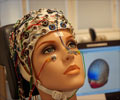
‘Nearly 100 previously unreported regions of the brain's wrinkly outer layer - called the cerebral cortex or grey matter - have been discovered.’
Tweet it Now
"These new insights and tools should help to explain how our cortex evolved and the roles of its specialized areas in health and disease," said Bruce Cuthbert of the US-based National Institutes of Health, which co-funded the research, published in the journal Nature. One day, it may enable 'unprecedented precision in brain surgery', he added.
In the 1800s, so-called 'phrenologists' divided the organ into sections controlling certain senses and character traits.
The region responsible for 'destructiveness', for example, hovered somewhere over the ear, with 'parental love' at the back of the head, and 'hope' located in the crown. This now defunct branch died out as dissection and other methods of scientific examination gained ground.
In 1909, German Neurologist Korbinian Brodmann published perhaps the best known brain map, based on the discovery that different regions were made up of different cell types.
Advertisement
It has been known for a while now, roughly, which regions control voluntary muscle movement, language, vision, sound, and aspects of personality, for example.
Advertisement
Before the new map, there were 83 known areas in each half of the brain - a number now boosted to 180, said the research team.
This was made possible by combining data from different imaging methods used to study the brains of 210 adults.
The researchers then tested their new software on a new group of another 210 adults, and found it could accurately identify the mapped regions in their brains too, even in spite of individual variability.
"The situation is analogous to astronomy where ground-based telescopes produced relatively blurry images of the sky before the advent of adaptive optics and space telescopes," said study author Matthew Glasser from the Washington University Medical School in Missouri.
Source-AFP













